Microair Avionics T2000 Transponder User Manual ATSO version 1
Microair Avionics PTY LTD Transponder ATSO version 1
Users Manual
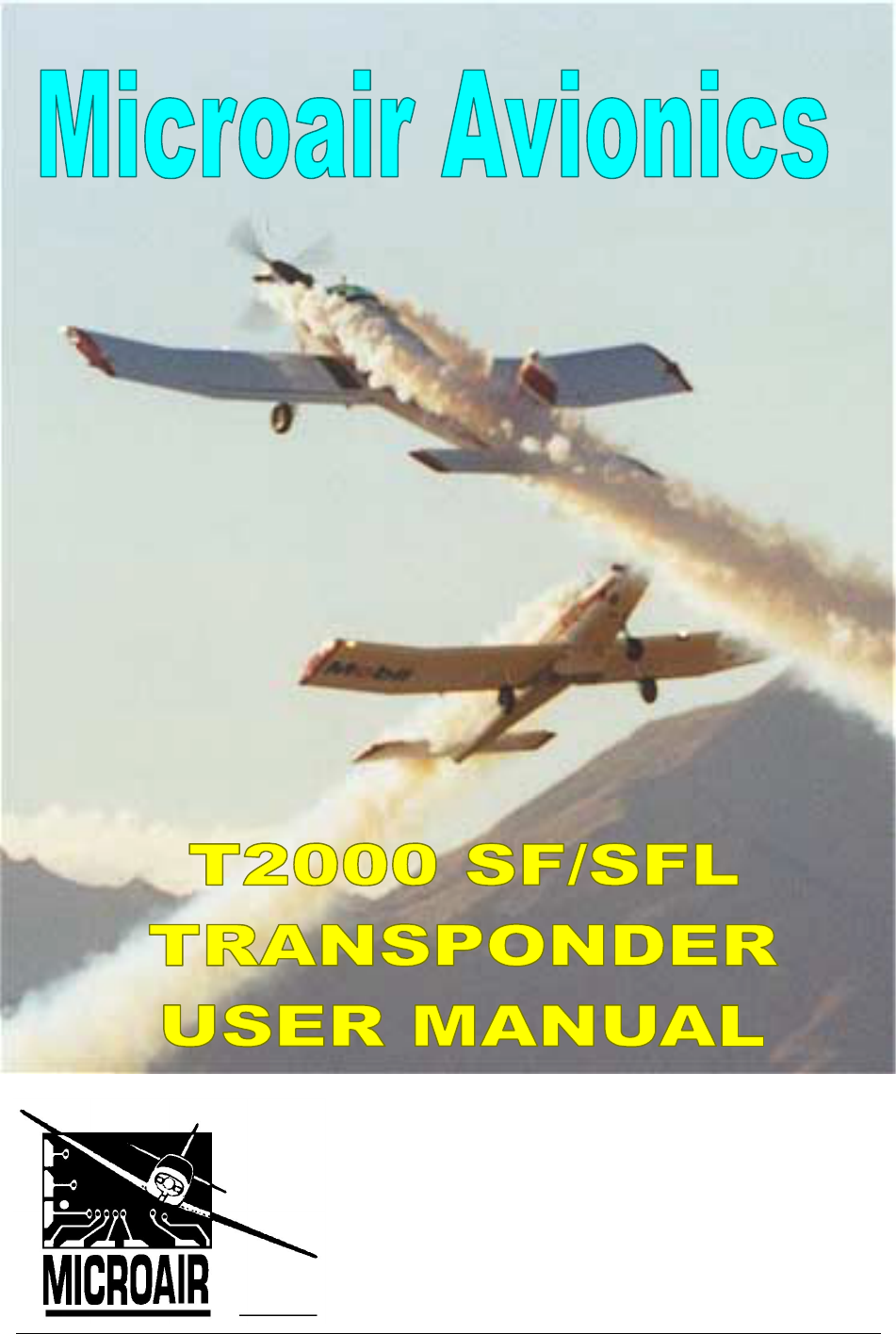
Microair Avionics T2000 Transponder User Manual
Version 2.0 Page 1 11/02/01
Microair Avionics PTY Ltd
Airport Drive
Bundaberg
Queensland 4310
Australia
Tel: +61 7 41 553048
Fax: +61 7 41 553049
e-mail: support@microair.com.au
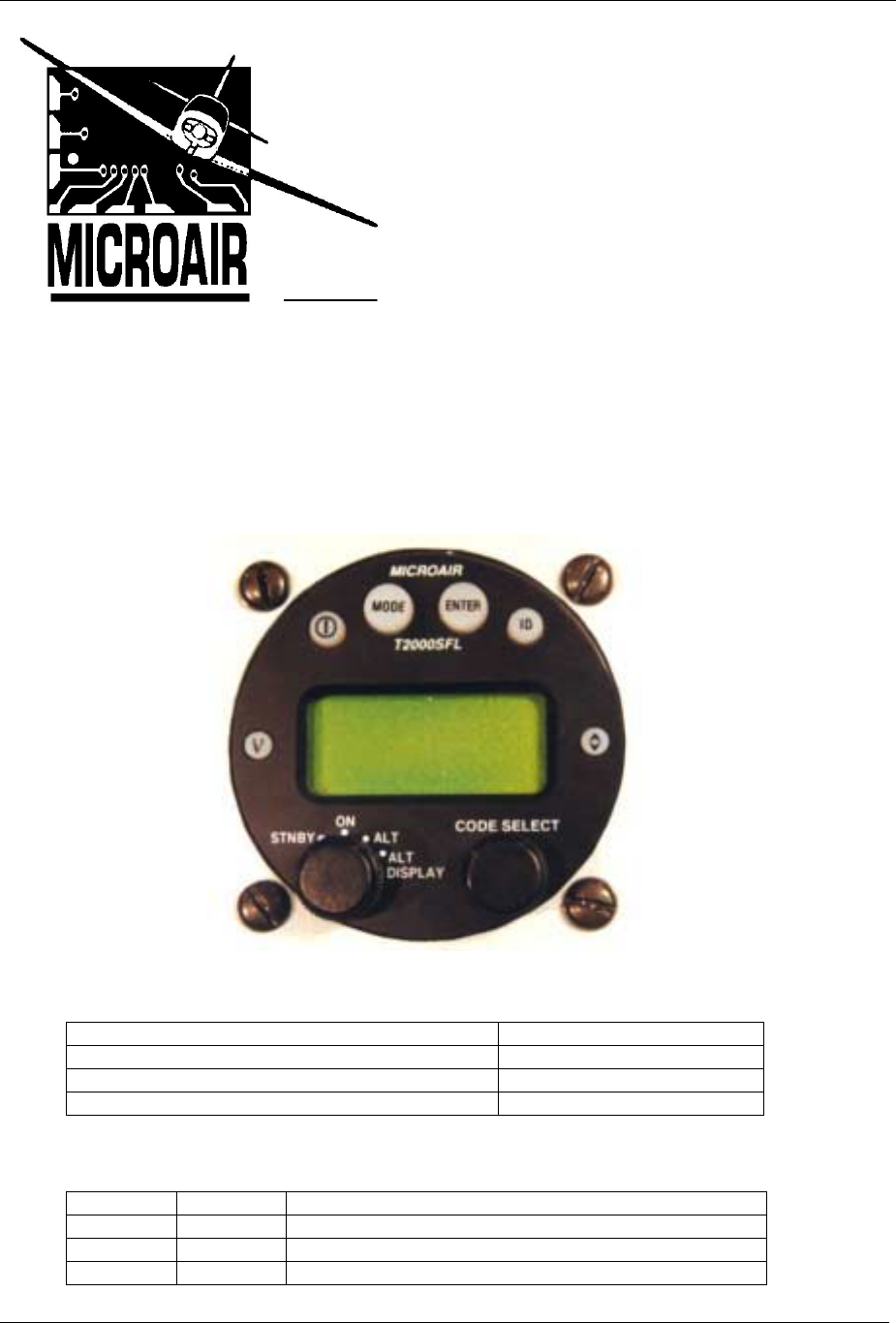
Microair Avionics T2000 Transponder User Manual
Version 2.0 Page 2 11/02/01
About This Document
Microair Avionics have developed a series of transponders
for use with OEM applications, and for commercial sale by
Microair Avionics. The manual explains the basic functions
and elaborates on the more sophisticated features, such as
altitude display and alerts.
Microair reserve the right to amend this manual as required,
to reflect any enhancements or upgrades to the T2000
Transponder series.
© Microair Avionics PTY Ltd
Statement:
The T2000SF/SFL owner accepts all responsibility for obtaining the proper licensing before using the
transponder. The coverage you can expect from the T2000SF/SFL is limited to “line of sight”. Low altitude or
aircraft antenna shielding by the aircraft itself may result in a reduced range. Range can be improved by
climbing to a higher altitude. It may be possible to minimize antenna shielding by locating the antenna where
dead spots are only noticed during abnormal flight attitudes.
The T2000SF/SFL should be turned off before starting or shutting down aircraft engine(s).
MICROAIR DOCUMENTS
Microair T2000 Users Manual T2000-DOC-001
Microair T2000 Installation Manual T2000-DOC-002
Microair T2000 Flight Manual Supplement T2000-DOC-003
Microair T2000 Service Manual T2000-DOC-004
DOCUMENT REVISION STATUS – T2000-DOC-001
Revision Date Change
1.0 11/02/01 Initial Draft
2.2 11/7/01 Voltage Monitoring

Microair Avionics T2000 Transponder User Manual
Version 2.0 Page 3 11/02/01
TABLE OF CONTENTS
ABOUT THIS DOCUMENT.............................................................................................................................2
MICROAIR DOCUMENTS ..............................................................................................................................2
DOCUMENT REVISION STATUS – T2000-DOC-001...................................................................................2
INTRODUCTION..............................................................................................................................................4
OPERATION.........................................................................................................................................6
T2000 SF/SFL...........................................................................................................................6
DISPLAY FUNCTION......................................................................................................................................7
T2000SF ................................................................................................................................................7
T2000SFL..............................................................................................................................................7
CONTROLS FUNCTIONS................................................................................................................................9
SELECTMODE KNOB.........................................................................................................................9
CODE ADJUST KNOB.......................................................................................................................10
ON KEY ..............................................................................................................................................10
MODE KEY ........................................................................................................................................11
QNH ENTRY ( BAROMETER SETTING )...........................................................................11
ASSIGNED ALTITUDE.........................................................................................................12
ASSIGNED BUFFER .............................................................................................................12
ALTITUDE UNITS.................................................................................................................13
VOLTAGE ( VOLTAGE SETPOINTS , RECEIVE VOLTS )...............................................13
BEEP.......................................................................................................................................13
ENTER KEY .......................................................................................................................................14
< > KEY..............................................................................................................................................14
VFR – HOT KEY ................................................................................................................................15
ID KEY................................................................................................................................................15
INITIALISATION AND SETUP.....................................................................................................................16
PROGRAM MODE.............................................................................................................................16
NAME & REGISTRATION (ONE TIME ONLY ENTRY)...................................................16
VOLTAGE..............................................................................................................................17
ENCODER POWER...............................................................................................................17
DISPLAY BRIGHT ( SF MODEL ONLY ) ...........................................................................18
DISPLAY TIMEOUT ( SF MODEL ONLY ) ........................................................................19
BAROMETRIC UNITS ..........................................................................................................19
EXIT PROGRAM ...................................................................................................................19
FREQUENTLY ASKED QUESTIONS: .........................................................................................................20
NORMAL TRANSPONDER OPERATIONS. .......................................................................20
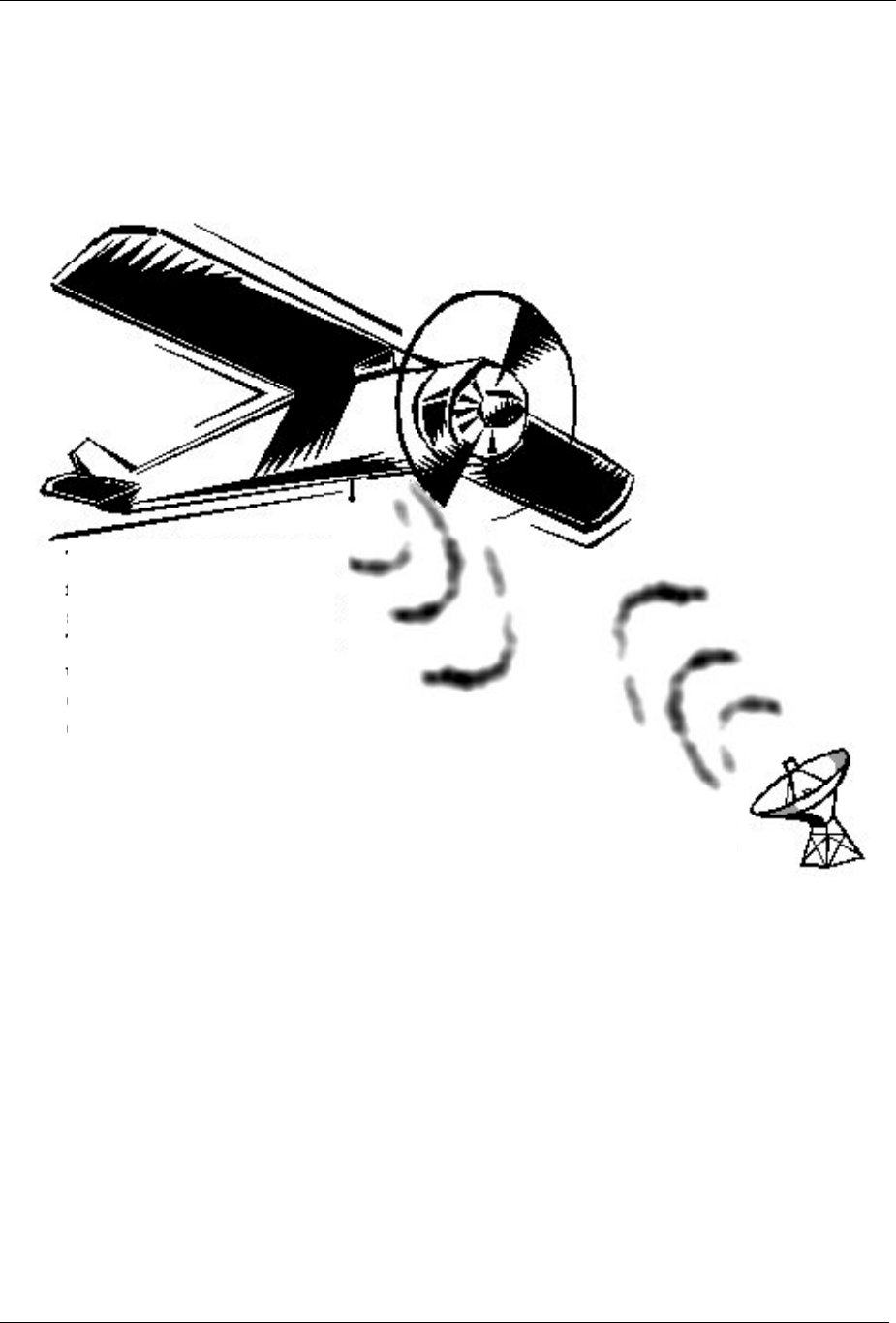
Microair Avionics T2000 Transponder User Manual
Version 2.0 Page 4 11/02/01
INTRODUCTION
The Microair T2000 Transponder is designed to operate in the environment of a Radar Beacon System. This
system interrogates the transponder, which in turn replies with an identity code and altitude information. The
radar system consists of a network of ground stations, which sweep the horizon like a conventional radar. When
the transponder in the aircraft detects the radar sweep (is illuminated), the transponder replies with a burst
transmission giving its identity code and altitude.
The system presents the replies from all transponders in range of the ground stations on a single display screen.
This allows ATC to easily locate, identify, and see the altitude of all traffic in their airspace.
A transponder’s reply is termed a squawk. Hence the current code being used by the transponder is termed the
squawk code. At times of high airspace activity, ATC may wish to uniquely identify an individual aircraft with a
request to squawk ident. The pilot uses the ident control on the transponder to make the transponder’s squawk on
the ATC display flash for a short period. The ident control should not be used unless ATC request it.
ATC will issue a code to an aircraft requesting entry to its controlled airspace. This code is normally unique for
each aircraft, each time that aircraft passes through the airspace. The code is 4 digits long, and each digit can
range from 0-7.
The aircraft’s transponde
r
receives the ground station
signal asking it to transmit.
The transponder “replies”
with the code, and if operating
in mode C, the encode
r
altitude.
Ground stations sweep the sky with a signal, which
asks the transponder in the aircraft to transmit its
code and altitude.

Microair Avionics T2000 Transponder User Manual
Version 2.0 Page 5 11/02/01
There are several special codes, which are used to identify General Aviation aircraft, and some special situations
which aircraft could encounter. Misuse of these codes may result in legal charges against the user.
IMPORTANT NOTE
ALWAYS check the standby code, BEFORE transferring it to the ACTIVE
position.
0000 Military use only (this code is not selectable)
1200 VFR General Aviation Code (US and other countries)
7000 VFR General Aviation Code (Europe)
7500 Hijack Code
7600 Communications Failure
7700 Emergency Code
7777 Military Intercept Code (NEVER USE)
The user should check the Civil Aviation Rules/Regulations to determine the VFR General Aviation transponder
code for their country.
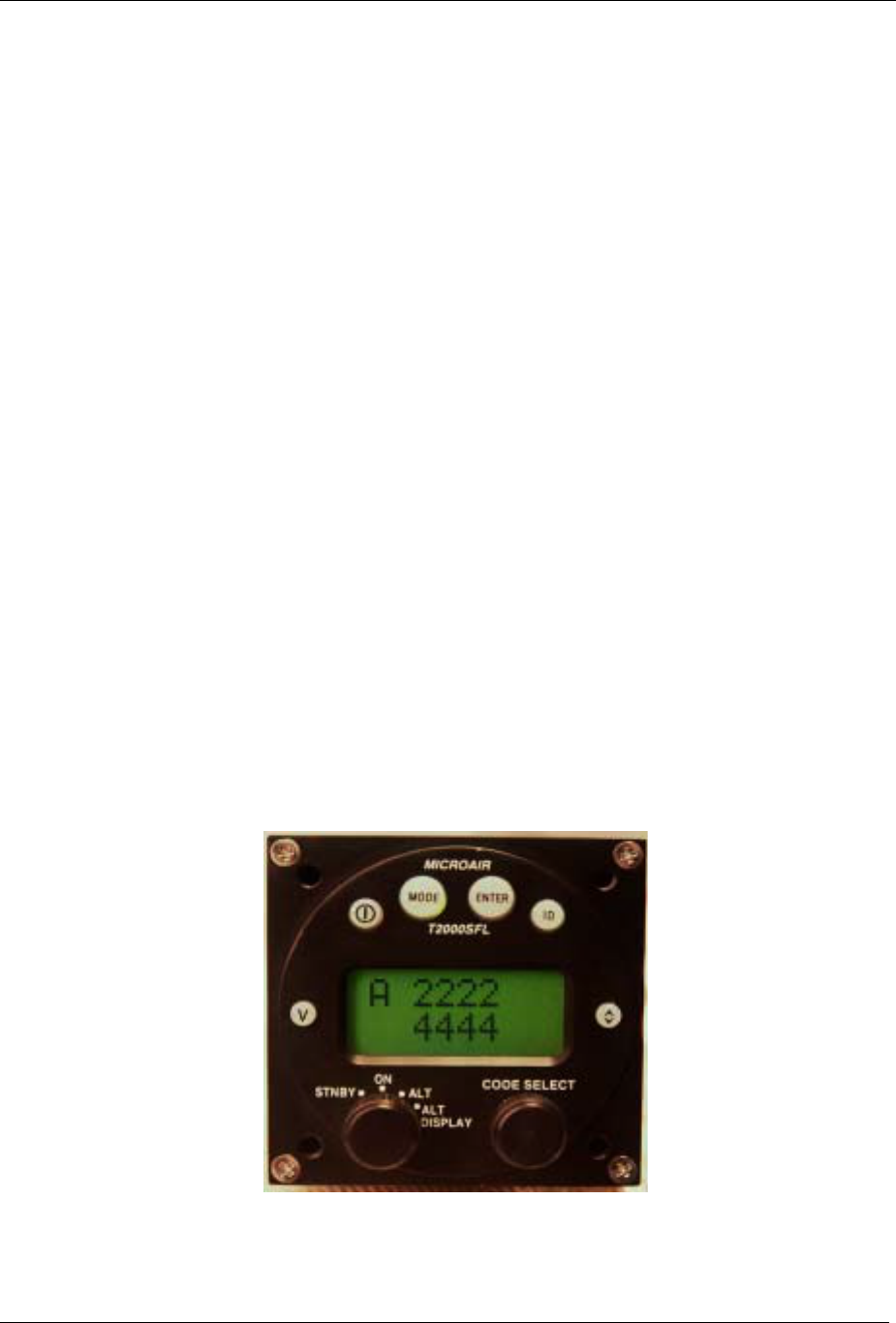
Microair Avionics T2000 Transponder User Manual
Version 2.0 Page 6 11/02/01
OPERATION
The transponder can be operated in the following modes:
ON Transponder operates in modes A & C with no altitude information being transmitted.
ALT Transponder operates in modes A & C with altitude information being transmitted.
If requested by ATC the user can squawk ident. The transponder will add an extra piece of data to the
transmission, to make the code and altitude information flash on the ATC radar display.
When operating in ALT mode, altitude data is received from a separate altitude encoder. This data is passed
back to the transponder to be included in the response transmission to ATC. The Microair T2000 is compatible
with any industry standard altitude encoder with parallel output.
The display can present the active and standby codes. The standby code can be changed at any time, and then
toggled to become the active code. The T2000 can replace the standby code with the encoder altitude, or supply
voltage.
In addition to the required TSO functions, the Microair T2000 offers a number of other useful features, which
can be displayed by the operator either as a pop-up message, audio beep, or a display option.
T2000 SF/SFL
The Microair T2000 SF/SFL are 57mm diameter face versions to fit the standard 2 ¼ inch instrument hole. The
mounting is by 4 x M4 machine screws, located through the panel and screwed into threaded holes in each
corner of the transponder’s front face.
The SF display is a two line LED unit of 8 characters per line. The SFL is a two line LCD display of 8
characters per line, with backlighting.
Microair T2000 SFL
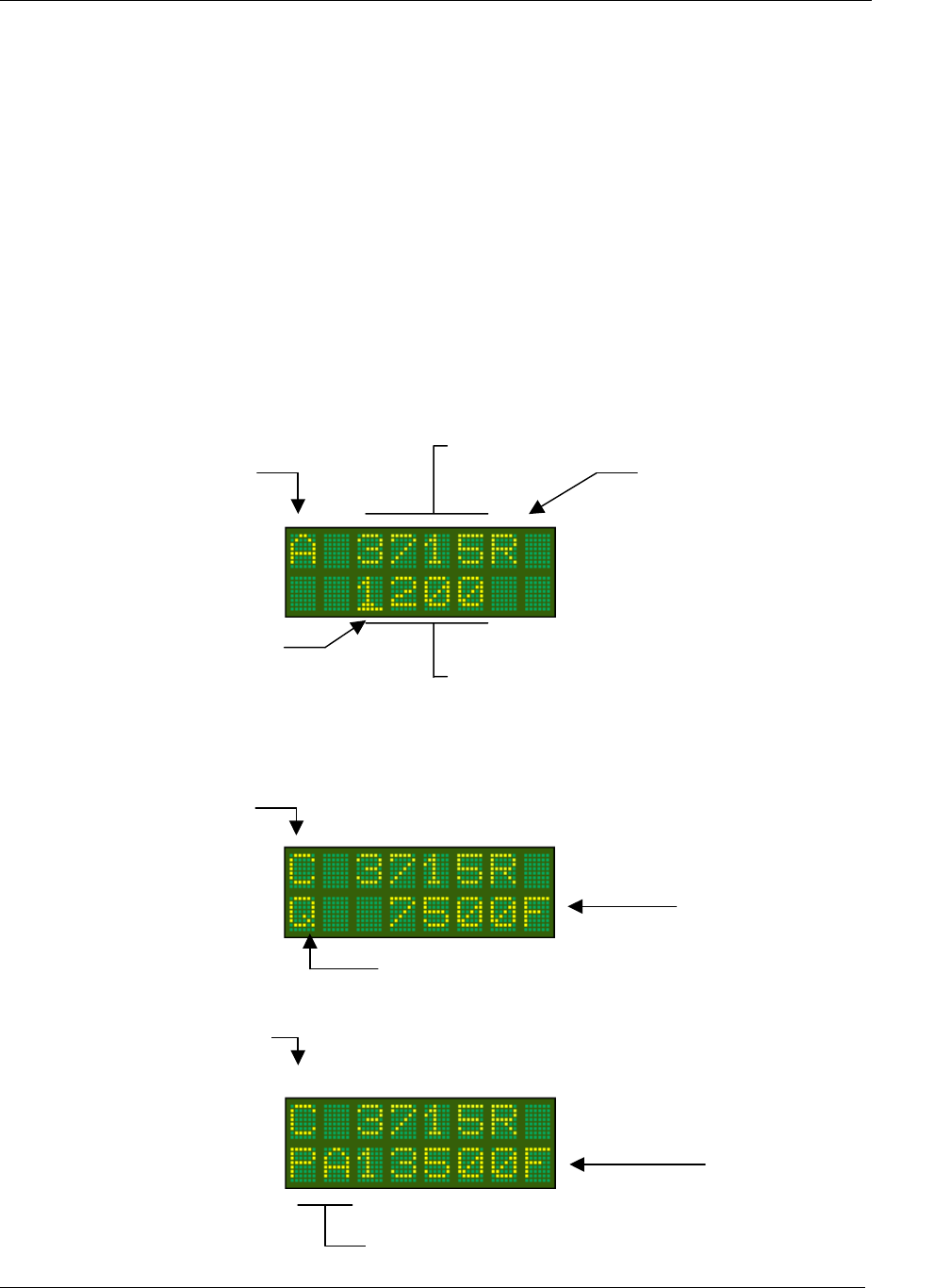
Microair Avionics T2000 Transponder User Manual
Version 2.0 Page 7 11/02/01
DISPLAY FUNCTION
T2000SF
The SF is a dual line display of 8 characters each, with the active code on the top line, and the standby code on
the bottom. The display is LED, with the brightness controlled by a light sensor adjacent to the display.
T2000SFL
The SFL is a dual line display of 8 characters each, with the active code on the top line, and the standby code on
the bottom. The display is LCD, with preset backlighting.
STANDBY CODE
ACTIVE CODE
OPERATION MODE
S = STANDBY
A = MODE A
C = MODE C
REPLY ICON
CURSOR
MODE C
QNH ADJUSTED ALTITUDE
ALTITUDE UNITS
F = FEET
FL = FLIGHT LEVEL
M = METRES
PRESSURE
ALTITUDE
PRESSURE ALTITUDE
(ENCODER OUTPUT )
MODE C

Microair Avionics T2000 Transponder User Manual
Version 2.0 Page 8 11/02/01
When the altitude is displayed, the standby code is saved into memory. To display the standby code again, press
the < > key once to make it appear on the bottom line. Press the < > key again to exchange the active and
standby codes. After 10 seconds of inactivity, the display will revert to displaying the altitude.
Pressure Altitude is the Encoder altitude. The encoder’s barometric adjustment is preset to 1013 millibars
(29.92HG). If the Encoder is not powered or not fitted, the message NO ALT will appear on the display.
It is possible to input the QNH (barometric pressure) given by ATC, into the T2000 to adjust the displayed
pressure altitude. This feature will allow the user to adjust the displayed altitude to read the same as the
aircraft’s altimeter.
IMPORTANT NOTE
When passing upwards through the transition level/layer the altimeter and
transponder should both be set to 1013mb (29.92HG). When passing down
through the transition level/layer the altimeter and transponder are reset to the
QNH (barometric pressure) given by ATC.
The T2000 will transmit the encoder altitude (pressure altitude) only, in accordance with normal mode C
operation. The adjusted QNH altitude is never transmitted.
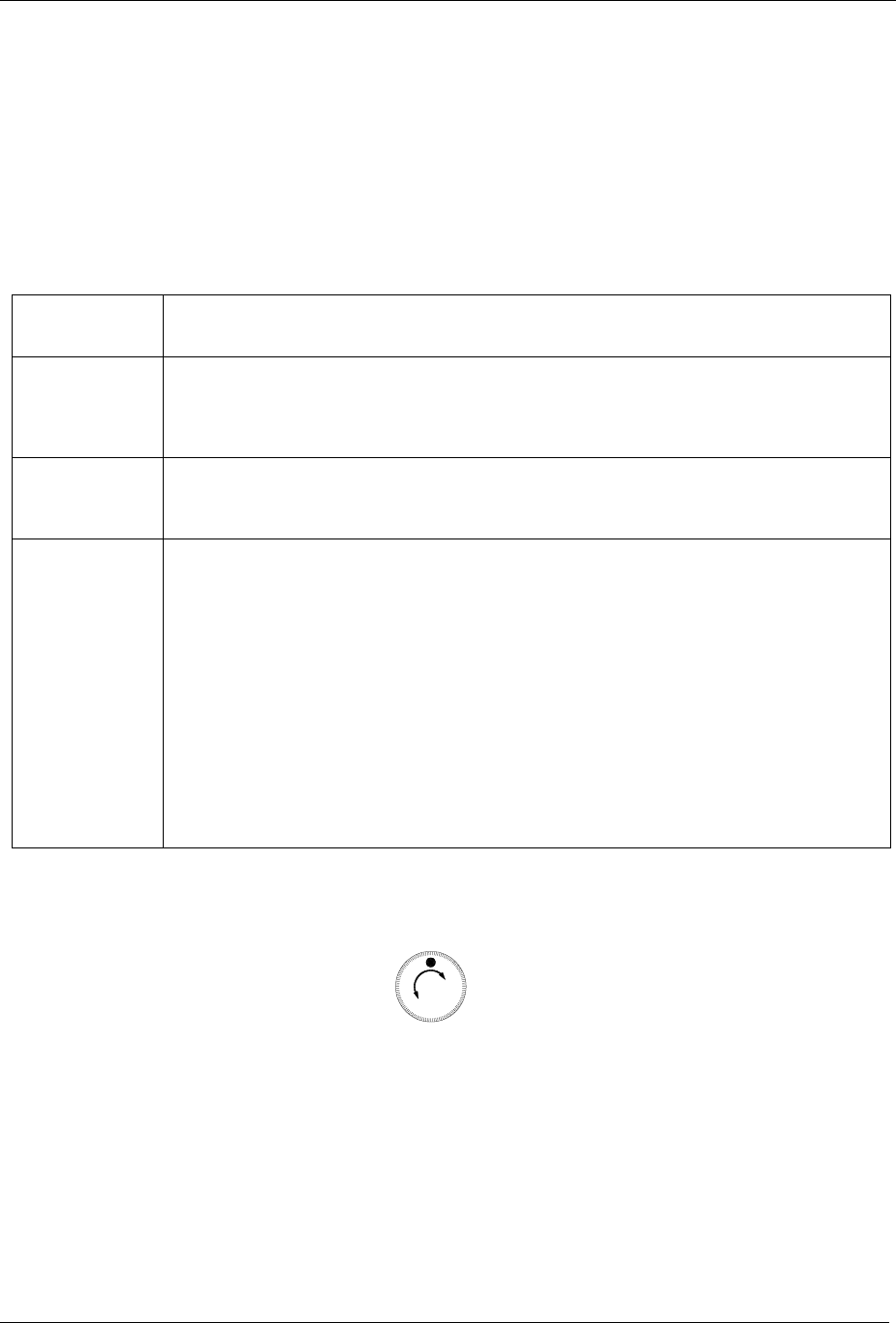
Microair Avionics T2000 Transponder User Manual
Version 2.0 Page 9 11/02/01
CONTROLS FUNCTIONS
This section describes the transponder control keys and their functions. Many of the control keys have more
than one function, and some keys access multi-option menus, which can be scrolled.
SELECTMODE KNOB
The SELECTMODE knob allows the user to switch the transponder between the 4 operating modes.
STANDBY In standby the transponder is powered up, but will not transmit.
On the active display line the letter S appears on the left hand side.
ON Will reply to Mode A and C interrogations, but with no mode C encoder information. Mode C blind
encoder is normally powered up in this mode, but can be powered down if encoder power option is set
OFF (refer Encoder power in Initialisation and Setup section).
On the active display line the letter A appears on the left hand side.
ALT Will reply to Mode A and C interrogations, with the mode C encoder information. In the absence of a
valid encoder input, only the C framing pulse will be sent.
On the active display line the letter C appears on the left hand side.
DISPLAY ALT The standby code is replaced with the encoder altitude. If the QNH has been set via the QNH
ENTRY option of MODE MENU, the displayed altitude will be adjusted for barometric air
pressure. Altitude will be displayed in units set in ALTITUDE UNITS option of MODE MENU.
Pressure Altitude can be displayed as:
• Pressure Altitude & FL PA FL 0 7 5 displayed
• Pressure Altitude & feet PA 7 5 0 0F displayed
• Pressure Altitude & metres PA 2 3 0 0M displayed
QNH corrected altitude can be displayed as:
• QNH Altitude & FL Q FL 0 7 5 displayed
• QNH Altitude & feet Q 7 5 0 0F displayed
• QNH Altitude & metres Q 2 3 0 0M displayed
The DISPLAY ALT only displays altitude if a valid encoder input is being received. When
climbing above the transition level/layer the user must reset the transponder’s QNH to 1013 (the
default value), at the same time the aircraft’s altimeter is adjusted.
On the active display line the letter C appears on the left hand side.
SELECTMODE
STBY
ON
ALT
DISP ALT
SF/SFL SELECTMODE Knob

Microair Avionics T2000 Transponder User Manual
Version 2.0 Page 10 11/02/01
CODE ADJUST Knob
The CODE ADJUST knob can be rotated clockwise to scroll upwards, and counter-clockwise to scroll
downwards. Each digit of the code is adjusted separately. The adjust function starts with the left hand digit and
is moved across to the next digit by pushing the CODE ADJUST knob inwards. After 10 seconds of inactivity
the cursor will revert to the left hand digit. The CODE ADJUST knob is also used to scroll through some of the
MODE MENU functions and PROGRAM MODE items.
CODE ADJUST
PUSH
SF/SFL CODE ADJUST Knob
ON KEY
For the SF, pressing the ON key once will turn the transponder ON. To turn the transponder OFF, hold the ON
key down for 3 seconds, the message TURNING OFF is displayed briefly, then the transponder will shut down.
For the SFL, pressing the ON key once will turn the transponder ON. Pressing the ON key a second time will
activate the backlighting to the pre-set minimum brightness level (refer the Initialisation and Set-up section).
Pressing ON a third time will bring the backlighting to its maximum brightness level. Press a fourth time and
the display will revert back to no backlighting. The SFL is turned OFF in the same way as the SF.
ON
SF/SFL ON Key
For the SF only the control keys are backlit. The LED display is continuously lit, with the level of brightness
controlled by the Photo Sensor on the front face.
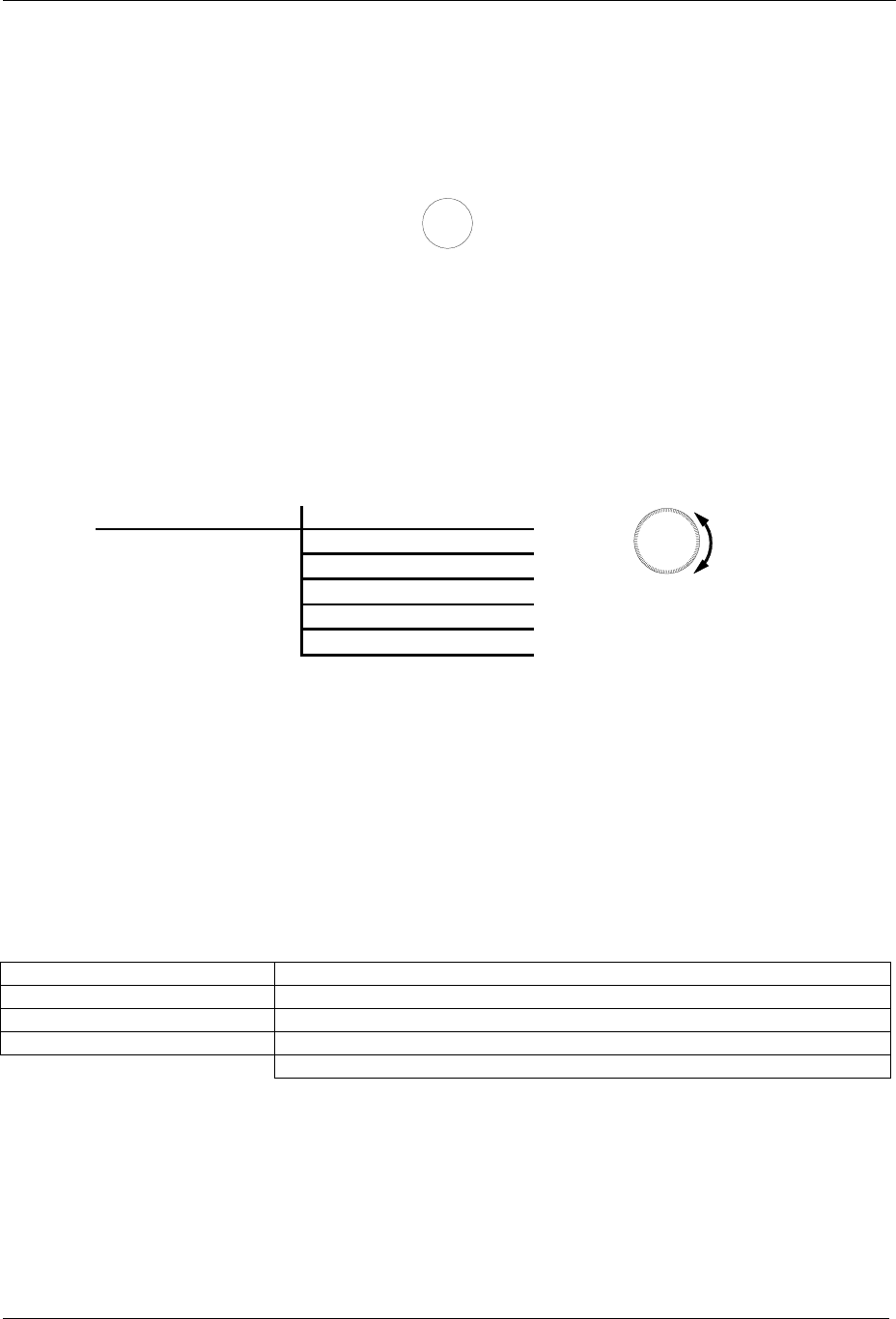
Microair Avionics T2000 Transponder User Manual
Version 2.0 Page 11 11/02/01
MODE KEY
The MODE key can be used to access two separate menus:
MODE
SF/SFL MODE Key
• If the transponder is turned on, by holding down both the ON key and the MODE key, the transponder will
start in PROGRAM MODE (refer Initialisation and Set-up).
• If the transponder is ON and in normal operation, press the MODE key to access the MODE MENU.
MODE MENU QNH ENTRY
ASSIGNED ALTITUDE
ALTITUDE BUFFER
ALTITUDE UNITS
VOLTAGE
CODE ADJUST
PUSH
BEEP rotate to scroll menu
QNH ENTRY ( BAROMETER SETTING )
Altitude encoders output a pressure altitude fixed at an above mean sea level (AMSL) pressure of 1013mb
(29.92HG). The aircraft’s altimeter is normally adjusted for actual surface pressure before take off. This means
the encoder altitude may not be the same as the altimeter reading.
The QNH can be entered here to allow the T2000 to adjust the displayed altitude to QNH altitude, and hence
read the same as the aircraft’s altimeter. The default QNH is 1013 (29.92HG). If the QNH is set to 1013
(29.92HG), the altitude displayed will default to the unadjusted pressure altitude direct from the encoder. If the
QNH is set to a discrete value (normally provided by ATC), the displayed altitude will be the encoder pressure
altitude adjusted for that QNH value.
Rotate CODE ADJUST knob Scroll to QNH ENTRY option
Press ENTER key To select QNH ENTRY option
Rotate CODE ADJUST knob Set QNH = 1013 to desired QNH. The default is 1013(mb) or 29.92(HG)
Press ENTER key The message SAVED appears briefly on the display
Display returns to QNH ENTRY in MODE MENU
The barometric units are set in the BAROMETRIC UNITS option of the PROGRAM MODE.
IMPORTANT NOTE
The T2000 will only transmit the encoder pressure altitude. The adjusted QNH
altitude is NEVER transmitted, even when it is being displayed.
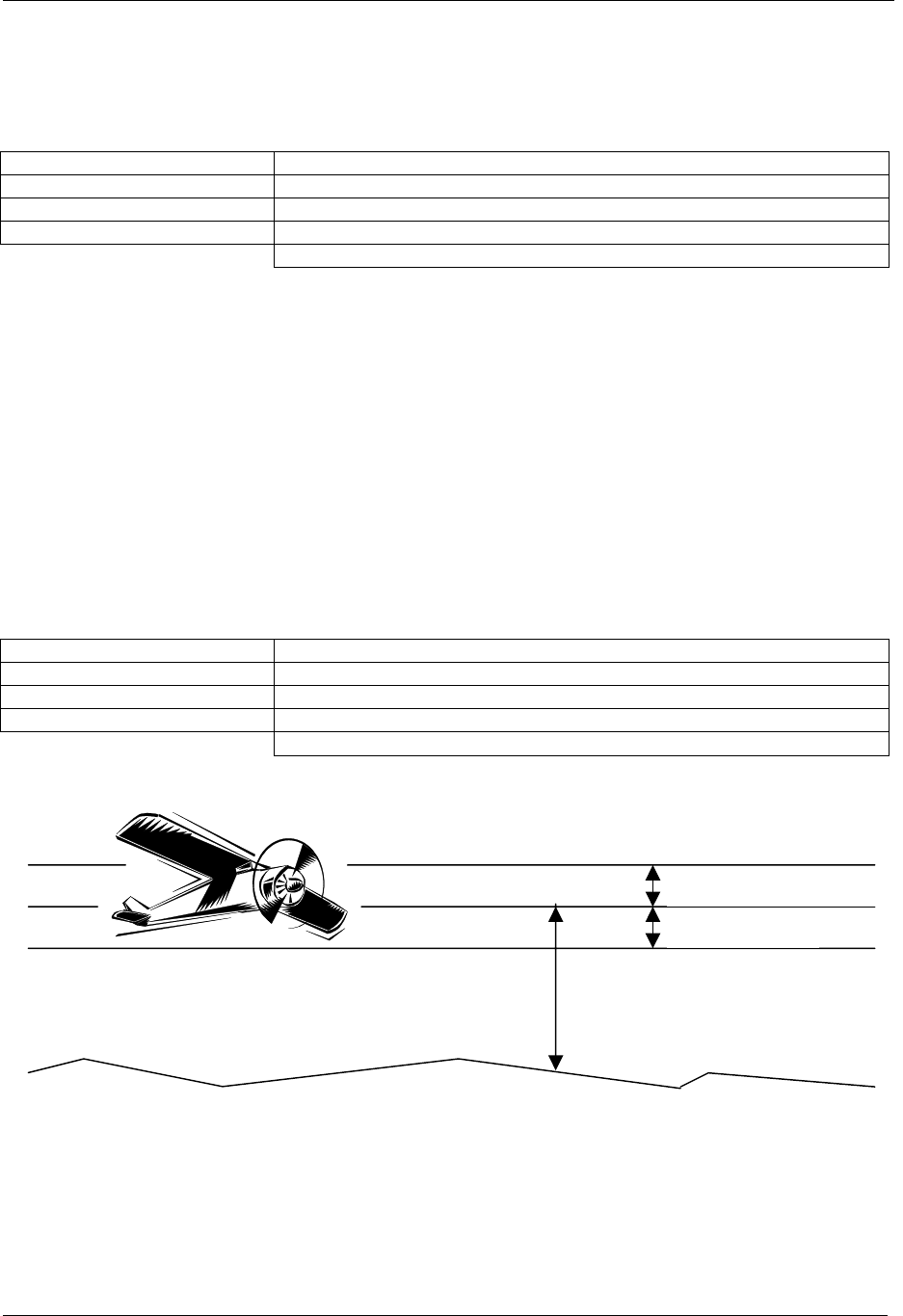
Microair Avionics T2000 Transponder User Manual
Version 2.0 Page 12 11/02/01
ASSIGNED ALTITUDE
The user can input an assigned altitude given by ATC. When used with the altitude buffer value, an audio alert
and display indicator advise when the aircraft has climbed or descended from the assigned altitude.
Rotate CODE ADJUST knob Scroll to ASSIGNED ALTITUDE option
Press ENTER key To select ASSIGNED ALTITUDE option
Rotate CODE ADJUST knob Set ALT = 0 to desired altitude. The default is 0
Press ENTER key The message SAVED appears briefly on the display
Display returns to ASSIGNED ALTITUDE in MODE MENU
If the ASSIGNED ALTITUDE is set ALT = 0, the altitude alert function is disabled. The altitude units are set
in the ALTITUDE UNITS option of the PROGRAM MODE.
The assigned altitude function is only active when the SELECTMODE knob is set to DISP ALT. If the
ASSIGNED BUFFER has not been set, the default alert is +/-100 feet or +/-30 metres.
ASSIGNED BUFFER
The user can input a buffer altitude, above and below the assigned altitude, to define a height band in which to
fly. When the aircraft exceeds the upper or lower limit, an indicator arrow will be displayed to show the
direction (up or down) the aircraft is going. If the BEEP function is ON, an audio tone will be heard as well.
If the ALTITUDE UNITS are set to FEET or FL, the BUFFER increments are in 100 foot units. If the
ALTITUDE UNITS are set to METRES, the BUFFER increments are in 30 metre units.
Rotate CODE ADJUST knob Scroll to ASSIGNED BUFFER option
Press ENTER key To select ASSIGNED BUFFER option
Rotate CODE ADJUST knob Set BUFFER=100 to desired altitude. The default is 100 (ft) or 30 (m)
Press ENTER key The message SAVED appears briefly on the display
Display returns to ASSIGNED BUFFER in MODE MENU
ASSIGNED ALTITUDE
ALTITUDE BUFFER
ALTITUDE BUFFER
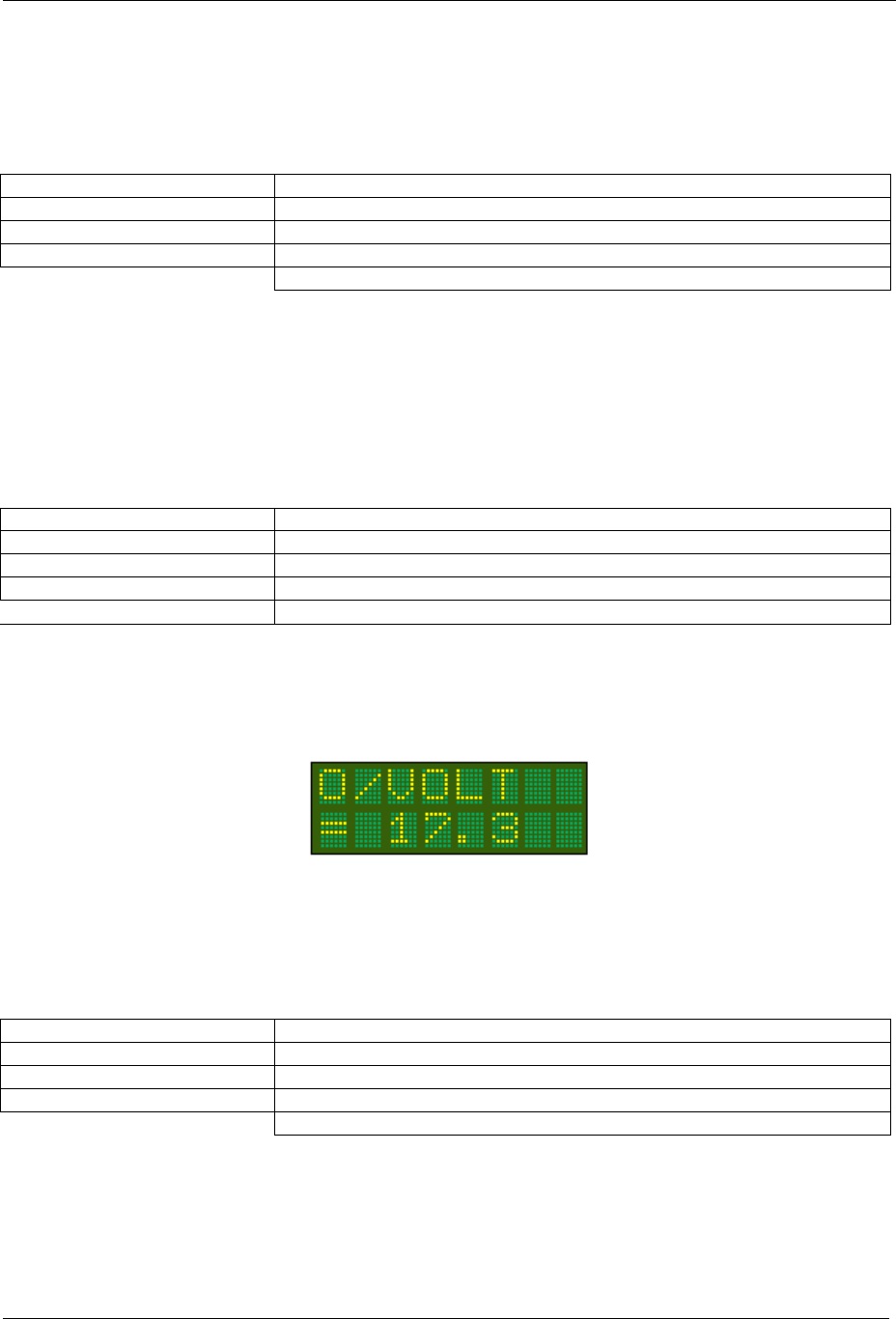
Microair Avionics T2000 Transponder User Manual
Version 2.0 Page 13 11/02/01
ALTITUDE UNITS
The altitude data can be displayed as feet, flight level, or metres. Once the ALTITUDE UNITS are set all
altitude data is displayed in these units. The exception is when the ALTITUDE UNITS are set to FL, the
ALTITUDE BUFFER is still displayed and set in FEET.
Rotate CODE ADJUST knob Scroll to ALTITUDE UNITS option
Press ENTER key To select ALTITUDE UNITS option
Rotate CODE ADJUST knob Set UNITS = FEET/FL/METRES The default is FEET
Press ENTER key The message SAVED appears briefly on the display
Display returns to ALTITUDE UNITS in MODE MENU
VOLTAGE ( Voltage setpoints , Receive Volts )
The VOLTAGE function will display the aircraft’s supply voltage , and by turning the scroll button the set
points for the voltage alerts and the receive volts can be displayed. Receive volt are used for diagnostic function
only and have no relevance to normal operation. The receive voltage will display a value between 0 and 255 (
higher the value , stronger the signal ). Voltage alarm levels are set in PROGRAM MODE menu (see
Initialisation and Set-up). Should an alarm activate , simply hit the enter key to acknowledge.
Select VOLT MON Current input voltage is displayed
Rotate Code adjust knob Over voltage set point high is displayed ( e.g O/V 16.00 )
Rotate Code adjust knob Under voltage set point low is displayed ( e.g U/V 10.00 )
Rotate Code adjust knob Receive VOLTS is displayed ( e.g 120 )
Rotate Code adjust knob Display returns to VOLTS display
When the transponder is operating in normal display operation mode, the over and under input voltage alert
flashes as a warning (for periods of 1 second every 5 seconds), and if the BEEP function is set ON, an audio
tone can be heard. Reset this by hitting enter. A further alert will happen after 5 minutes if the voltage condition
is still under / over.
BEEP
The BEEP function is used by many of the T2000’s features, to alert or confirm a variety of messages and
functions. When set ON, the BEEP also confirms every key press. The BEEP can be heard from either the
cabin speaker, or through the headphones.
Rotate CODE ADJUST knob Scroll to BEEP option.
Press the ENTER key To select BEEP option
Rotate CODE ADJUST knob Set BEEP = ON/OFF The default is ON
Press the ENTER key The message SAVED appears briefly on the display
Display returns to BEEP in MODE MENU
To exit the MODE MENU, scroll the CODE ADJUST knob past the BEEP option. The display will return to
the selected display mode.
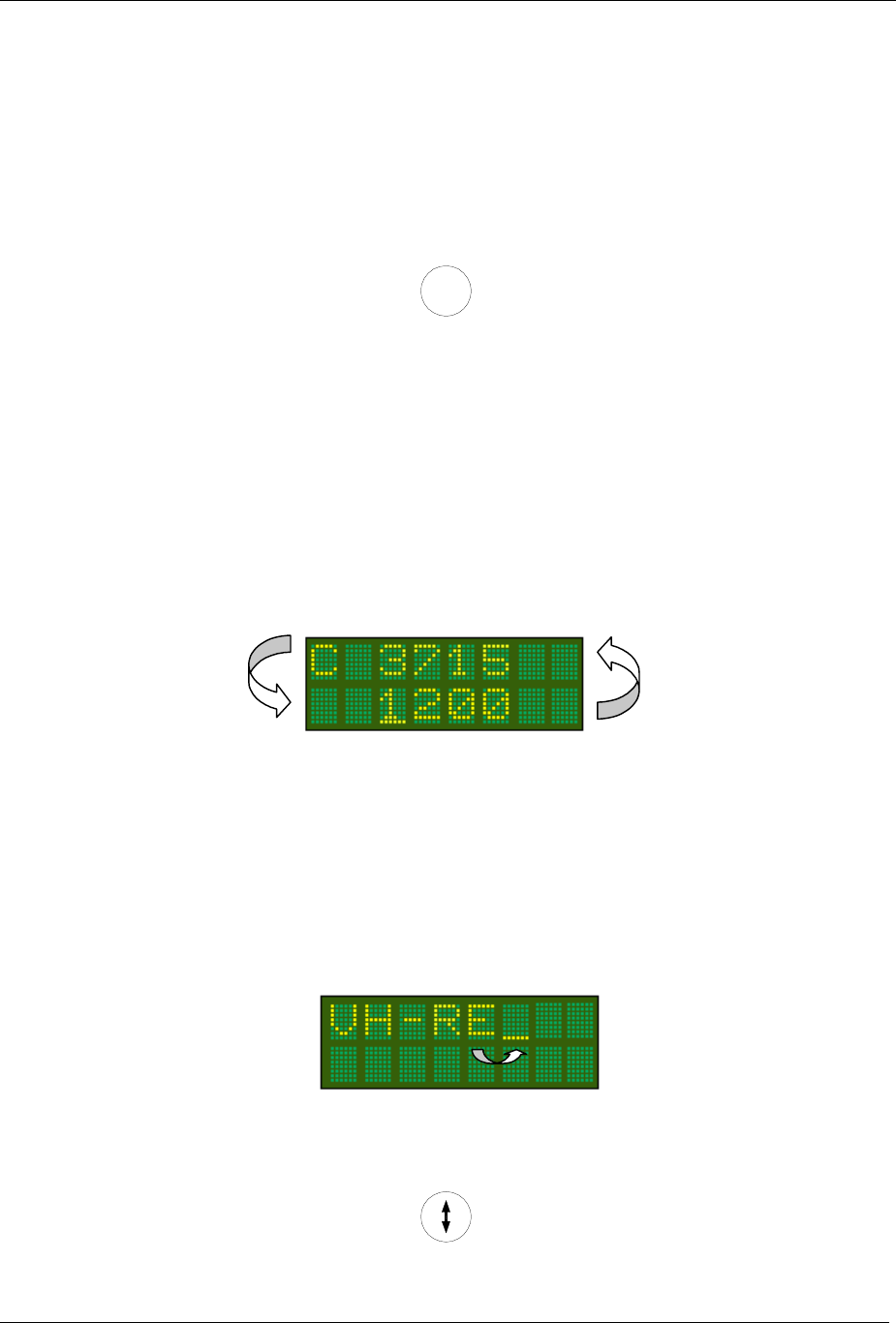
Microair Avionics T2000 Transponder User Manual
Version 2.0 Page 14 11/02/01
ENTER KEY
The ENTER key is a confirmation key used to confirm information the user has inputted. After pressing the
ENTER key, the display will typically give the message SAVED, for a short period.
The ENTER key is also used to select an option from a scrolled menu.
ENTER
SF/SFL ENTER Key
< > KEY
This key acts as a “toggle” switch, exchanging the active and standby codes. For the SF/SFL the active code is
the top line, and the standby is on the bottom line.
When the transponder is operating in DISPLAY ALT the bottom line displays the encoder altitude instead of
the standby code. The standby code is stored in memory. To toggle the active and standby codes in this mode,
push the < > key once to display the standby code on the bottom line. The standby code is displayed for 10
seconds. Push the < > key again to exchange the active and standby codes. Once the codes have been
exchanged, the display will revert back after 10 seconds, to displaying the altitude on the bottom line. In all
modes of operation, only the active code is transmitted.
The < > key is also used to advance the cursor one position to the right, when keying in information.
SF/SFL TOGGLE Key

Microair Avionics T2000 Transponder User Manual
Version 2.0 Page 15 11/02/01
VFR – HOT KEY
The VFR key will default the standby code immediately to the stored VFR code. Typically this code will be
1200 for a General Aviation aircraft.
To set a different VFR code, simply hold the VFR key down for 3 seconds, and the standby code will change to
VFR 1200. Use the CODE ADJUST knob to set a new VFR code and press the ENTER key to store. The
display will briefly show the SAVED message, then revert to the active/standby mode, with the new VFR code
in the standby position.
To transfer the VFR code to the active position, press the < > key. If no code is entered, after 10 seconds idle the
standby position will revert back to the original VFR code.
VFR
SF/SFL VFR Key
ID KEY
The ID key ( Ident ) when pressed, adds additional code information to the transmission for ATC. The code will
flash on the ATC display as a means of uniquely identifying the aircraft’s code from any other. The T2000 has
the option of a remote ID switch (pin 16).
The external switch should be a momentary-ON type. The switch or ID key only need to be pressed briefly to
activate the ident function.
ID
SF/SFL IDENT Key
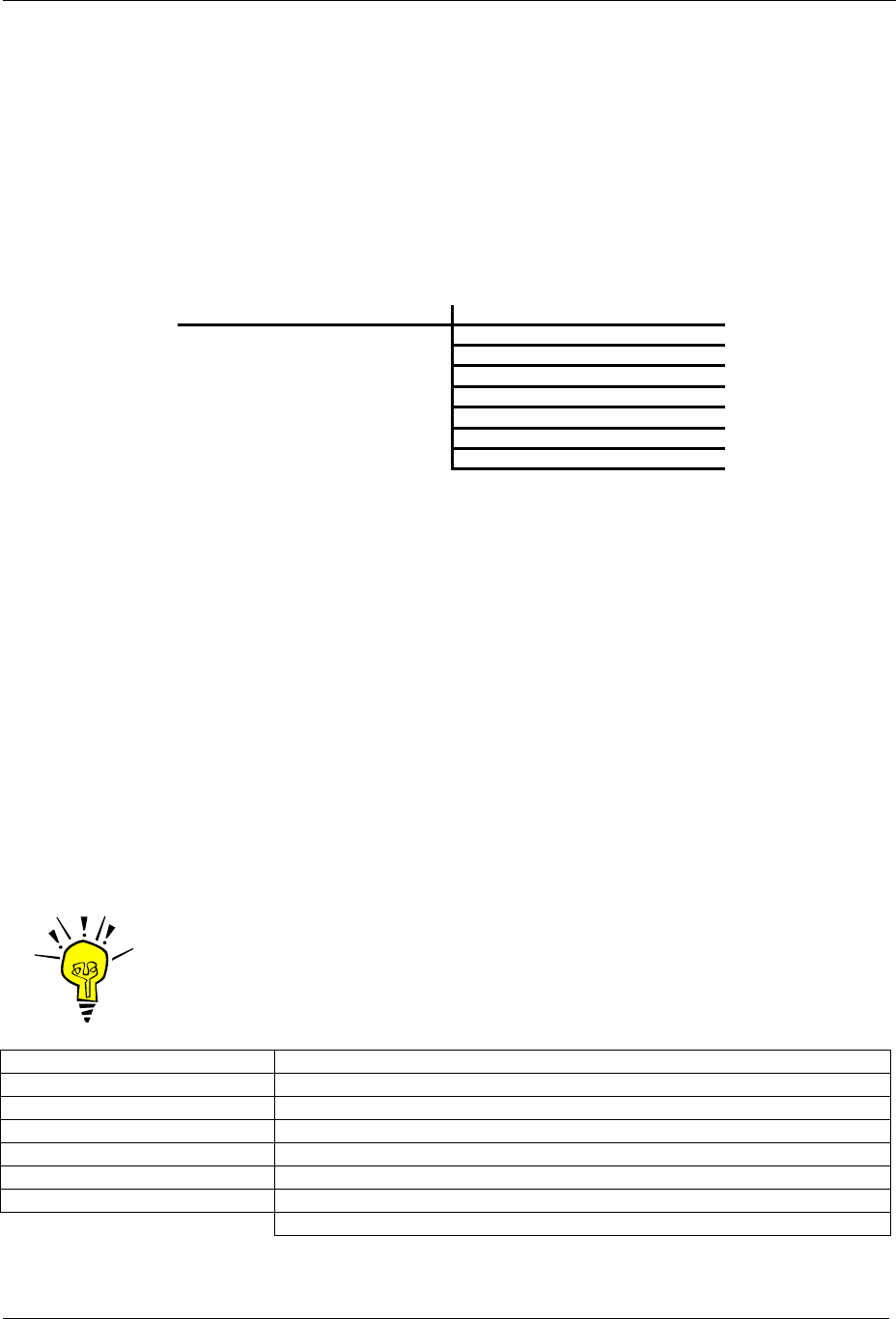
Microair Avionics T2000 Transponder User Manual
Version 2.0 Page 16 11/02/01
INITIALISATION AND SETUP
The T2000 will operate as a conventional transponder when first installed and powered up. You will be able to
turn the transponder ON/OFF, adjust the standby code, and transfer the standby and active codes.
The T2000 has many other features, which can be programmed. Microair recommend, that the full setup
procedure be carried out prior to first flight. This section provides detailed procedures on the various parameters
and functions that can be setup from the front panel.
The following procedures provide step by step instructions to program the transponder options.
Program Mode Name & Registration
Voltage
Encoder Power
Display Type
Display Bright ( SF Model )
Display Timeout ( SF Model)
Barometric Units
Exit Program
PROGRAM MODE
When the unit is turned ON with the MODE key held down, the unit will start up in the PROGRAM MODE.
The screen will display PROGRAM MODE then press the ENTER key to continue.
The program will sequence through all of the set up options. To exit PROGRAM MODE at any time, turn the
transponder off for 5 seconds. When turned back on with the ON key only, the transponder will then start in
selected display mode.
NAME & REGISTRATION (one time only entry)
The T2000 allows you to enter either your name or aircraft registration into a non-erasable memory. This
provides a level of security for the transponder, uniquely identifying it. Once entered, this information will be
displayed each time the transponder is turned on.
Your NAME/REG may be alpha or numeric or a combination of both, up to 16 characters long.
IMPORTANT NOTE
For security, once you enter and confirm your NAME/REG it cannot be
changed without the transponder being returned to an authorised service
facility. If a NAME/REG has previously been entered, this PROGRAM
MODE item will not be displayed again.
Rotate CODE ADJUST knob Scroll to NAME/REG option
Press ENTER key To select NAME/REG option
Rotate CODE ADJUST knob Adjust to desired letter/number for 1st character
Press < > key Saves character and advances one space to the right
Rotate CODE ADJUST knob Adjust for 2nd character etc (repeat steps 2 & 3 to complete)
Press ENTER key Message CONFIRM NAME/REG appears
Press ENTER key Message TAKEN appears briefly on the display
Display returns to NAME/REG in PROGRAM MODE menu
At the message CONFIRM NAME/REG, if you want to go back and edit, press the < > key. The display will
return the NAME/REG field with the cursor at the right-most character.
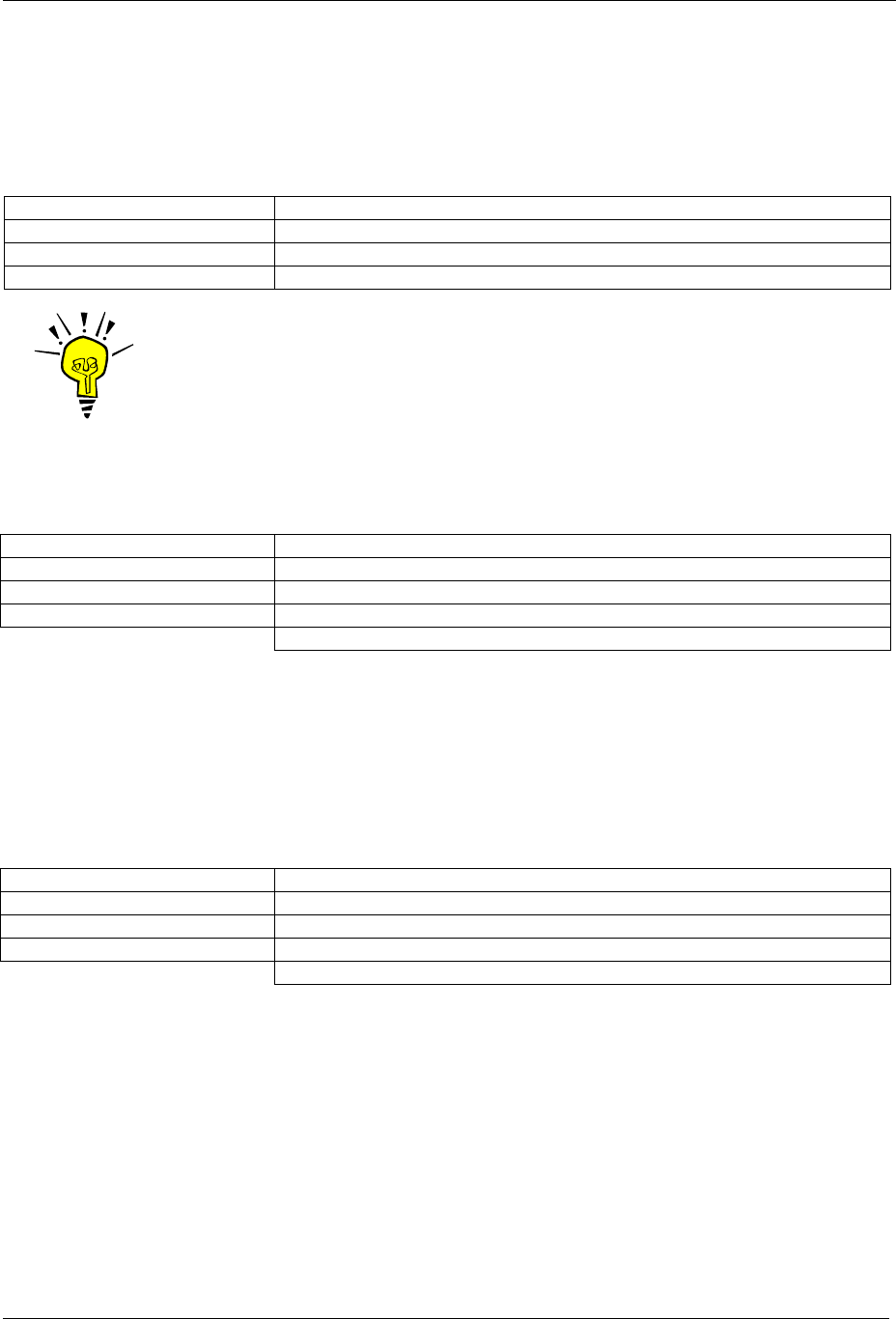
Microair Avionics T2000 Transponder User Manual
Version 2.0 Page 17 11/02/01
VOLTAGE
The T2000 can monitor aircraft voltage, and alert the pilot to the aircraft electrical system over or under voltage
conditions. This is the aircraft supply voltage not just the transponder voltage, and is very useful for
troubleshooting aircraft electrical problems. These alerts can be programmed for 14 or 28V aircraft.
Rotate CODE ADJUST knob Scroll to VOLTAGE MONITOR option
Press ENTER key To select VOLTAGE MONITOR option
Rotate CODE ADJUST knob Set A/C VOLT = 14/28 The default is 14
Press the ENTER key The message SAVED appears briefly on the display
IMPORTANT NOTE
The T2000 can be connected to either a 14 or 28 volt supply. It is
necessary however to set the monitored supply level for this function. The
maximum supply voltage for the T2000 is 33 volts. Prolonged supply
voltage above 33 volts will damage the transponder.
Having selected the correct supply voltage, you can now program the lower and upper alert voltages that will be
shown on the display of the transponder. Note: You should allow a reasonable buffer margin.
Rotate CODE ADJUST knob Set over voltage - eg O/V = 18.0 for a 14 volt system
Press ENTER key The message SAVED appears briefly on the display
Rotate CODE ADJUST knob Set under voltage - eg U/V = 11.5 for a 14 volt system
Press ENTER key The message SAVED appears briefly on the display
Display returns to VOLTAGE MONITOR in PROGRAM MODE menu
ENCODER POWER
This controls the output volts for an external encoder if required. The power supplied for the encoder can be
turned OFF when the transponder SELECTMODE knob is in the ON position (mode A). Power is only
supplied when operating in the ALT position (mode C). This function is provided to save power when operating
solely from a battery supply.
Rotate CODE ADJUST knob Scroll to ENCODER POWER option
Press ENTER key To select ENCODER POWER option
Rotate CODE ADJUST knob Set E/C POW = ALT/ALL Select ALT for encoder power in ALT mode only
Press ENTER key Message SAVED appears briefly on the display
Display returns to ENCODER POWER in PROGRAM MODE menu
ALT Encoder power is on in ALT and DISP ALT modes only
ALL Encoder power is on in all modes.
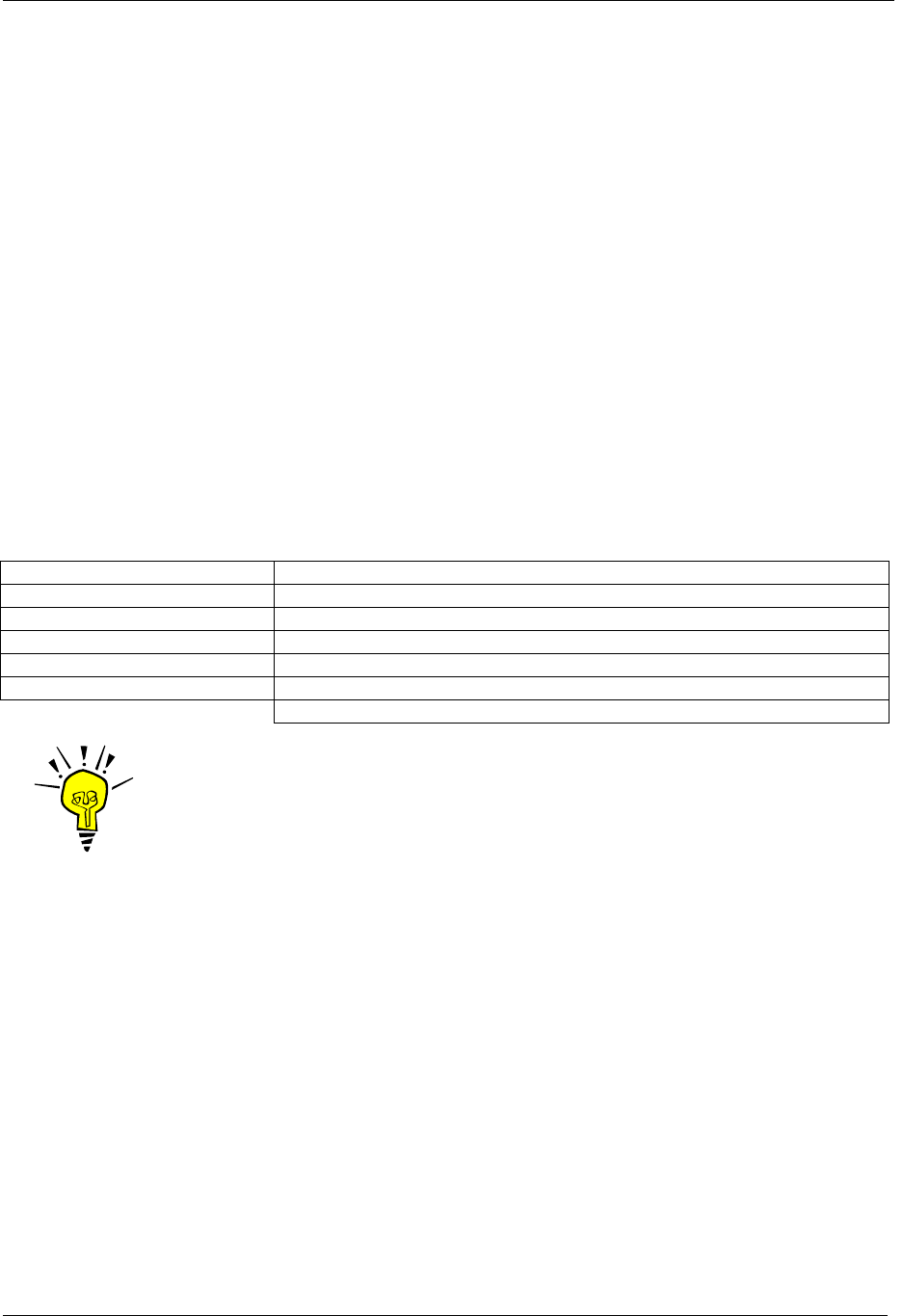
Microair Avionics T2000 Transponder User Manual
Version 2.0 Page 18 11/02/01
DISPLAY TYPE
For installations where a second display is used, it is necessary to identify to the RF engine which display has
priority over the other. The display with the ability to lock out the other is the MASTER display. The other
display is defined as the SLAVE. In normal operation the MASTER has control over the transponder with the
SLAVE acting as a second display only (no control function). Only when the MASTER’s SELECTMODE
knob has returned to STBY will the controls of the SLAVE become active.
Rotate CODE ADJUST knob Scroll to DISPLAY TYPE option
Press the ENTER key To select DISPLAY TYPE option
Rotate CODE ADJUST knob Set DISPLOC = MASTER/SLAVE The default is MASTER
Press ENTER key The message SAVED appears briefly on the display
Display returns to DISPLAY TYPE in PROGRAM MODE menu
IMPORTANT NOTE
This parameter must be set for each display. For correct function, there can be
only one MASTER and one SLAVE.
DISPLAY BRIGHT ( SF Model only )
The minimum and maximum display brightness levels can be pre-set to allow the desired levels of brightness
for daytime and night time operation. Min Bright and Max Bright are expressed as percentages.
Rotate CODE ADJUST knob Scroll to DISPLAY BRIGHT option
Press the ENTER key To select DISPLAY BRIGHT option
Rotate CODE ADJUST knob Set MIN Bright XX% (range = 0 - 99%) The default is factory setting
Press ENTER key The message SAVED appears briefly on the display
Rotate CODE ADJUST knob Set MAX Bright XXX% (range = 0 – 100%) The default is factory setting
Press ENTER key The message SAVED appears briefly on the display
Display returns to DISPLAY BRIGHT in PROGRAM MODE menu
IMPORTANT NOTE
You may have to experiment with these settings to achieve the desired
brightness level for day and night use. You cannot set the maximum
brightness percentage to a lesser value than the minimum percentage.
This function is reserved for control management of a remote display, or a second display.
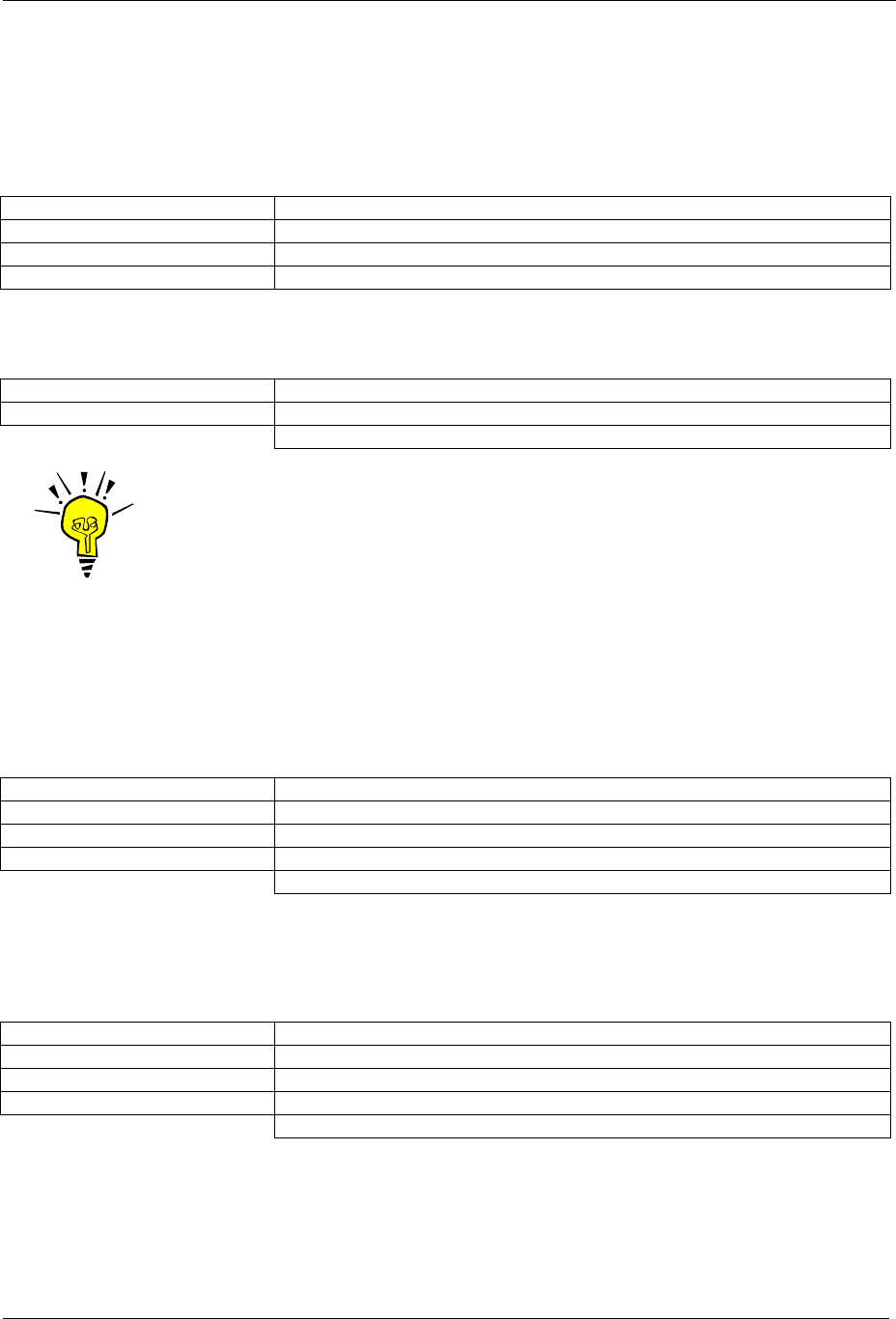
Microair Avionics T2000 Transponder User Manual
Version 2.0 Page 19 11/02/01
DISPLAY TIMEOUT ( SF Model only )
The display brightness/backlighting can be turned off after a pre-set period of time to reduce battery
consumption. This feature is predominately used in aircraft that may only have battery power, without a
charging circuit. Other users that may find this feature of benefit are pilots who prefer a dark cockpit at night,
thus helping to preserve night vision.
Rotate CODE ADJUST knob Scroll to DISPLAY TIME OUT option
Press the ENTER key To select DISPLAY TIME OUT option
Rotate CODE ADJUST knob Select either DSP Tout = ON/OFF The default is OFF
Press the ENTER key The message SAVED appears briefly on the display
If you select DSP Tout = ON the time value must now be entered. Time values are entered in whole minutes as
a two digit number eg three minutes = 03
Rotate CODE ADJUST knob Set DSP Tout = 03
Press ENTER key The message SAVED appears briefly on the display
Display returns to DISPLAY TIME OUT in PROGRAM MODE menu
IMPORTANT NOTE
During operation with the display time out activated, touching any
control will reactivate the display.
BAROMETRIC UNITS
The barometric units must be set to the officially recognised units for the country in which the transponder is
being operated. This selection becomes the unit of measure for QNH (barometric pressure) settings. The two
options are MB for millibars, and HG for inches mercury.
Rotate CODE ADJUST knob Scroll to BARO UNITS option
Press the ENTER key To select BARO UNITS option
Rotate CODE ADJUST knob Set BARO = MB/HG The default is MB
Press ENTER key The message SAVED appears briefly on the display
Display returns to BARO UNITS in PROGRAM MODE menu
EXIT PROGRAM
This menu item allows the user to exit from the PROGRAM MODE menu.
Rotate CODE ADJUST knob Scroll to EXIT PROGRAM option
Press the ENTER key To select EXIT PROGRAM option
Rotate CODE ADJUST knob Select either EXIT = Y/N The default is Y
Press ENTER key The message PROGRAM EXIT appears briefly on the display
Display returns to selected display mode
If N is selected the display will return to PROGRAM MODE, which is displayed briefly before advancing to
the first menu item.
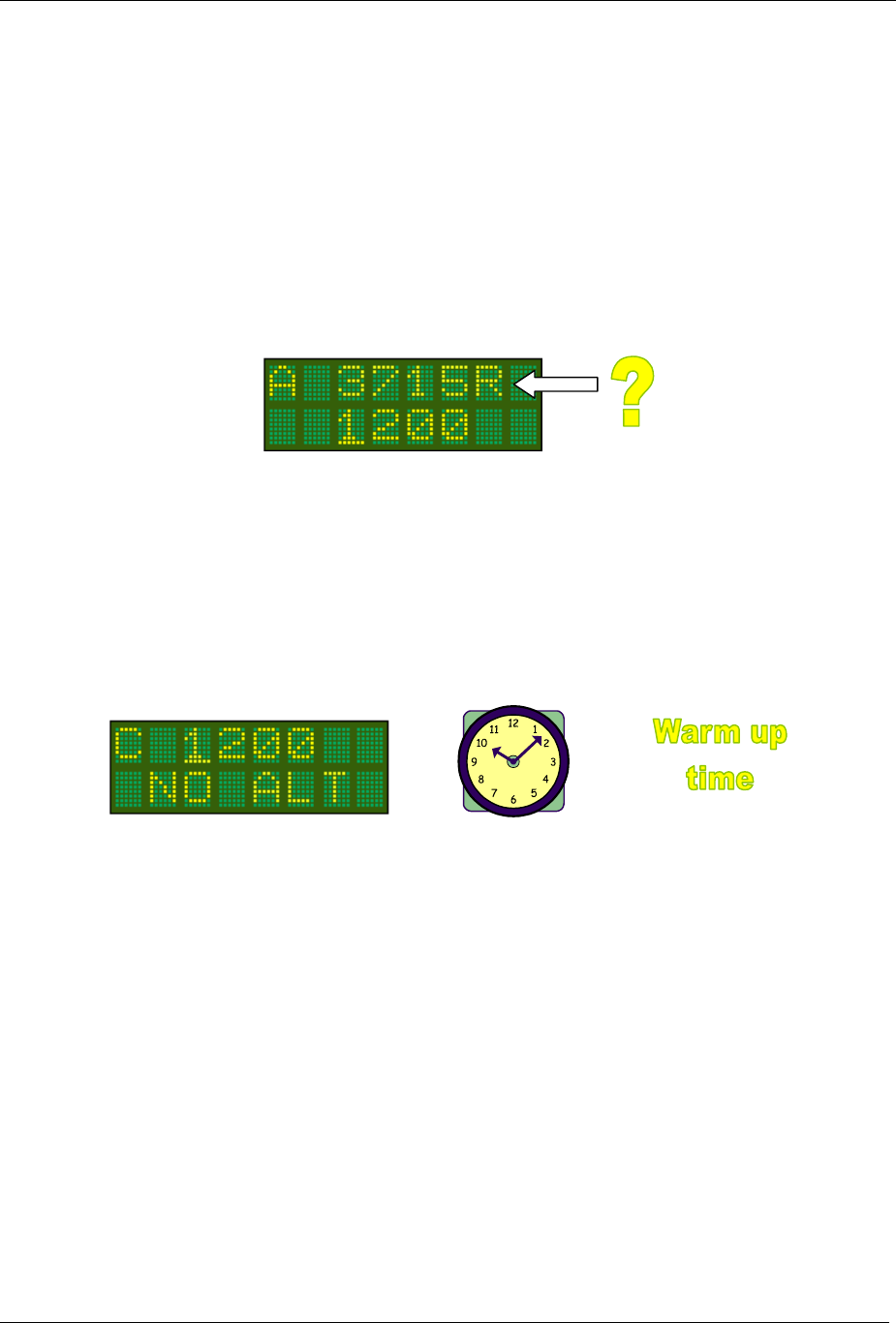
Microair Avionics T2000 Transponder User Manual
Version 2.0 Page 20 11/02/01
FREQUENTLY ASKED QUESTIONS:
Normal Transponder operations.
The following questions are common to most users and may help you understand the operation of the T2000,
some of these are explained in the user manual but may have been missed by the reader:
Q. When I am asked to sqwawk Ident ( ID ) the R indicator stays on for a long time. Why ???
A The R or reply , is used both for indicating a reply to an interrogation , and for indicating an ident reply ,
the reply will stay on for 20 seconds before returning to normal operation.
Q When asked to go to mode C from mode A , the altitude does not appear on the ground station for some
time, usually after 8 minutes , is this normal?
A Yes , if the encoder has the option for mode C only power on ( see setup ) , then when in mode A it will
have no power applied to it, in mode C the power is applied for the first time. Some encoders have a
warm up period of 5 to 8 minutes, so the encoder information will be missing for this period. One way to
overcome this is to have the encoder power on selected to ALL ( in the options , setup ) . This means that
as soon as the unit is turned on , the encoder will be running. For power conservation ( Gliders etc ) we
recommend power on mode C only.
Q I have mode C selected and when I taxi around an S appears instead of C , even though it is not in
standby!
A. The unit has been wired with the external standby to an airswitch. This is a safeguard against operations
on the ground. When the plane reaches a certain speed the S will toggle back to a C ( same happens in
modes A and ALT ). Again when landing an the speed reduces , it will toggle back to S ( standby ).
Another possible cause may be that instead of being wired to an airswitch , it may be wired to a stick
mounted toggle switch – make sure it is switched off if you require normal operation! Please note , the
T2000 standby switch will still work on the ground or in the air – you can always select standby!

Microair Avionics T2000 Transponder User Manual
Version 2.0 Page 21 11/02/01
Q I have noticed that sometimes when I switch off from the Avionics masters switch , and turn on this way
the T2000 turns on , but if I turn off the T2000 from it’s own on /off , when I turn on the avionics master
the next time , the T2000 is off! It has to be turned on again from the T2000 on / off button , is this
normal?
A Yes , this is perfectly normal. The T2000 remembers the last condition it was in, if you turn it off from
the master whilst it is running , it will turn on again the same way. If you use the on / off button on the
T2000 , it will remember the last state it was in . In normal operation we advise using the on/off button
on the T2000, as this will give the unit protection against voltage surges. In some installations however,
the use of an avionics master tends to make this process obsolete for some – we still recommend turning
it off and on via the T2000 on/off button!

Microair Avionics T2000 Transponder User Manual
Version 2.0 Page 22 11/02/01
Q Whilst flying outside normal radar coverage I have noticed that the reply symbol still flashes from time
to time – what causes this?
A Other aircraft fitted with TCAS systems can still interrogate non TCAS equipped aircraft like yours. This
then lets them know where you are, and is displayed on their TCAS screens. The aircraft could be 100 or
more miles away and at altitudes +30 or 40,000ft!
This concludes our FAQ’s , you can log on to www.microair.com.au for others FAQ and technical data.

Microair Avionics T2000 Transponder User Manual
Version 2.0 Page 23 11/02/01
Limited Warranty
Microair Avionics Pty Ltd warrants this product to be free from defects in materials and workmanship for 1 year
from the date of purchase. Microair Avionics will, at its sole discretion, repair or replace any components, which
fail in normal use. Such repairs or replacement will be made at no charge to the customer for parts or labour.
The customer shall be responsible for any transportation costs for return of this product to Microair Pty Ltd.
This warranty does not cover failures due to abuse, misuse, accident, incorrect installation, unauthorized
alteration, or repairs. It shall be at Microair Pty Ltd’s sole discretion to decide if a defect is a result of material
or workmanship failure.
THE WARRANTIES AND REMEDIES CONTAINED HEREIN ARE EXCLUSIVE AND IN LIEU OF ALL
OTHER WARRANTIES EXPRESSED OR IMPLIED, INCLUDING ANY LIABILITY ARISING UNDER
WARRANTY OF MERCHANTABILITY OR FITNESS FOR A PARTICULAR PURPOSE, STATUARY OR
OTHERWISE. THIS WARRANTY GIVES YOU SPECIFIC LEGAL RIGHTS, WHICH MAY VARY FROM
STATE TO STATE, AND COUNTRY TO COUNTRY.
IN NO EVENT SHALL MICROAIR AVIONICS PTY LTD BE LIABLE FOR ANY INCIDENTAL,
SPECIAL, INDIRECT OR CONSEQUENTIAL DAMAGES, WHETHER RESULTING FROM THE USE,
MISUSE OR INABILITY TO USE THIS PRODUCT OR FROM DEFECTS IN THE PRODUCT. SOME
STATES OR COUNTRIES DO NOT ALLOW THE EXCLUSIONS OF INCIDENTAL OR
CONSEQUENTIAL DAMAGES, SO THE ABOVE LIMITATIONS MAY NOT APPLY TO YOU.
To obtain warranty service, CALL the Microair Avionics Support line in Australia:
Phone: ++ 61 7 41 553048
Fax: ++ 61 7 41 553049
Email: support@microair.com.au
Call to obtain a return authorization tracking number when returning any product to Microair. The unit should
be securely packaged with the tracking number clearly marked on the outside of the package, and sent freight
pre paid and insured to:
Microair Avionics PTY Ltd
P O Box 5532
Bundaberg West
Queensland 4670
Australia
Microair may at it discretion, refer product returns for repair or service, to a service facility closest to you. A
copy of the original sales receipt is required as proof of purchase for warranty repairs. Microair Avionics PTY
Ltd reserves the right to repair or replace the unit or software or offer a full refund of the purchase price at it’s
sole discretion.
SUCH REMEDY SHALL BE YOUR SOLE AND EXCLUSIVE REMEDY FOR ANY BREACH OF
WARRANTY.